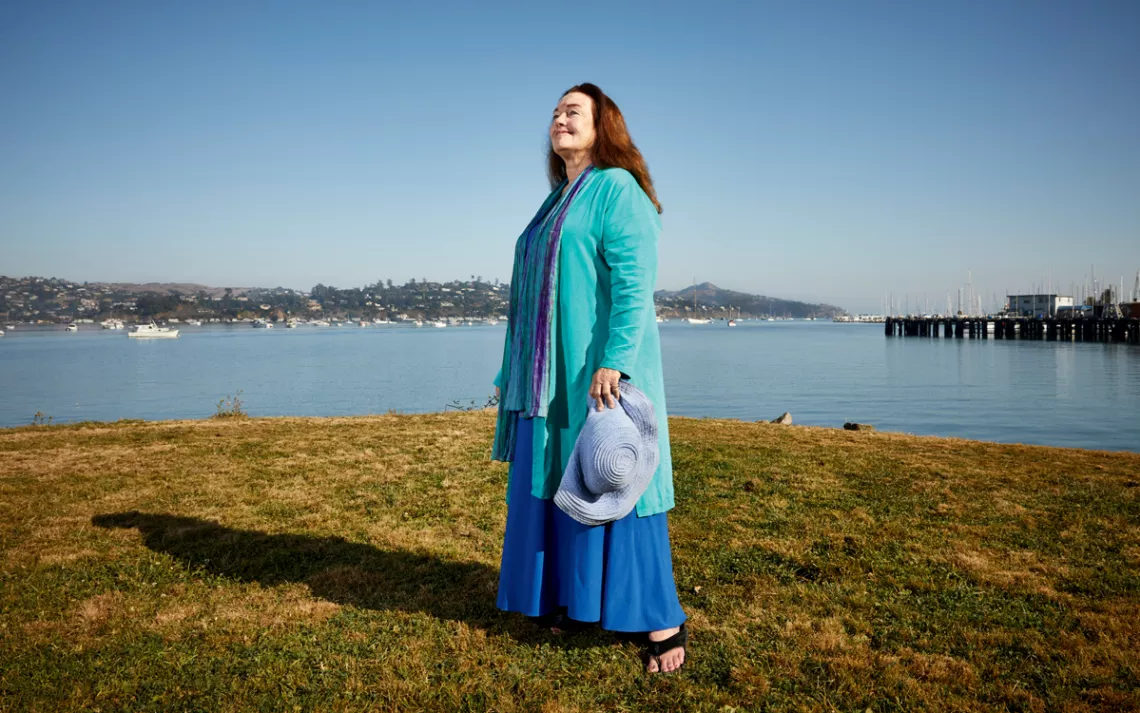Untangling the Problem of Ocean Plastic
Mary Crowley captains the search for discarded fishing nets

Mary Crowley, founder and executive director of Ocean Voyages Institute. | Photo by Gabriela Hasbun
During the past half century, Mary Crowley has sailed nearly 115,000 miles of ocean, as both a crew member and a sea captain. Over the years, she has noticed that all the places she loves—Greece, Italy, Costa Rica, Palau, French Polynesia, Indonesia, Thailand, the Galápagos Islands—have been gradually filling up with plastic debris.
Through her nonprofit, Ocean Voyages Institute (OVI), which is located in Sausalito, California, Crowley organized a 2009 expedition to the North Pacific Gyre to study the problem. She determined that one of the biggest offenders is "ghost nets," which linger long after they are lost or discarded by commercial fishing operations and end up entrapping and killing marine life.
After consulting with marine architects, engineers, oceanographers, and other experts, Crowley began to think about ways that existing ships and maritime equipment could be used for ocean cleanup. Eventually, she developed a plan: to design special satellite trackers and enlist volunteers to attach them to ghost nets so they could be monitored and eventually retrieved. Once the soccer-ball-size devices were ready, OVI handed them out to seagoers, including participants in the Trans Pacific Yacht Race and crews of environmental vessels belonging to Greenpeace and the Sea Shepherd Conservation Society.
In the summer of 2019, a cargo schooner left Honolulu on a mission to collect the tagged debris. Crowley suspected that ocean currents sort out plastic according to size, shape, and density and had a hunch that when the onboard drones located one fishing net, others would be nearby (she calls this her "one tracker, many nets" theory).
In fact, after picking up a tagged net weighing 600 pounds, the crew found two much-larger nets within a five-mile radius. After 25 days, the ship returned to port with 42 tons of nets. Two tons were given to environmental artists, and the rest of the nets were sent to a waste-to-energy power plant in Hawaii.
Now, Crowley is planning a longer 2020 expedition, and she hopes the crew will collect more than 400 tons of ghost nets. She'd like to see fishing boats tasked with picking up smaller "consumer debris," and her institute is developing methods for collecting shredded plastic and microplastics.
Crowley believes that cleaning up the high seas is only one solution to the plastic problem. Getting rid of single-use plastic is another. "We also have to change our habits and our manufacturing," she says. "We've been treating our oceans as our garbage pail for centuries. It's time we stop."
This article appeared in the January/February 2020 edition with the headline "Ghost Net Buster."
 The Magazine of The Sierra Club
The Magazine of The Sierra Club



